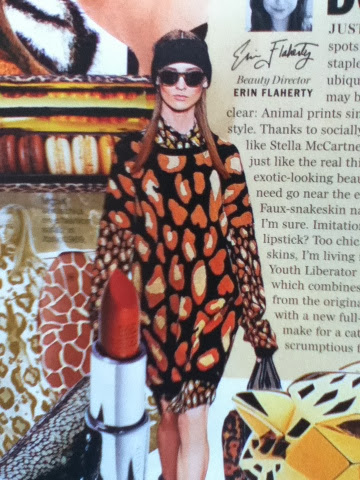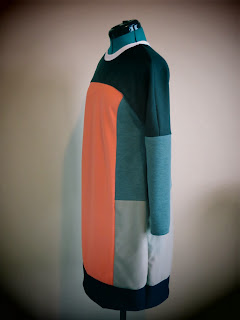If there's one thing I hate, it's buying paper napkins and paper towels. I always end up forgetting to buy them when I'm at the grocery store, or else forgetting that I bought them last time and having bazillions of paper towels cluttering up my precious under-the-sink space. I also really can't stand how much trash my husband and I create from just paper napkins and paper towels. Think of how many you use a day--not only for meals, but snacks, wiping things off, etc. It's a ridiculous amount. Last Saturday, I did something about it, and you can too! Apparently, a quick Google search will bring you to hundreds of other people who have had this same brilliant idea.
What makes my idea different is that my process only takes 20 minutes of your life and creates a reusable napkin system that is just as convenient as the paper ones!
All you Need:
1. Pinking Shears.
2. A clean old bedsheet.
3. Measuring Tape.
A word about the supplies above. Pinking Shears are those funky zig-zag scissors. People use them when they want to create a non-fraying edge to fabric without having to hem the fabric by sewing. You can buy a decent pair at Walmart for around $10, or ask your grandmother for one--every grandmother has a pair. It's a grandmother prerequisite. (Don't use the kind for scrapbooking, because they don't cut fabric very well at all.) Use an
old bedsheet. In other words, DON'T GO BUY A BRAND NEW ONE. That defeats the purpose of "Going Green." If you don't have a bedsheet to spare, use random cotton fabric scraps, or else if you absolutely have to buy one go to the thrift store. Let's use what we have already instead of creating more trash.
Now you need to figure out the correct measurements to your liking. I am too lazy to make big ol' 12-14" napkins because when they are that size they need to be folded before they are stacked. Yeah right. Not happening. Also, you are going to want to measure the entire piece of fabric to see if it is closest to a multiple of something. In other words, if your sheet is 60" across, and you are making 10" napkins, you can make six napkins across without any waste. If you are using bolt fabric that someone gave you, that kind of fabric is usually 44-45" across, so if you made 11" napkins, you could get four of them across. Make sense? My fabric was 52" inches across (I had a big scrap), so I decided to make 10" napkins. I cut a little slit at 50" and then ripped the fabric down the length of it instead of cutting: (1) it saves time (2) I was sure to get a straight line.
(The picture below just shows you what 10" looks like compared to a folded paper napkin.)
From there, I measured the fabric the other way and got 64", so I cut a little slit at 60" and ripped it down the length. When I finished ripping I had a piece of fabric that was 50" x 60".
In other words: 30 napkins.
From here, you can just cut the edge of your fabric all the way around with the pinking shears. However, if you want to save time, do my little trick: Fold the fabric in half and then half again. This creates four layers. (My pinking shears can cut 4-6 layers of material, so this was perfect.) Smooth out any wrinkles and then cut the two sides of raw edges. This creates the same amount of cutting in 1/4 of the time!
From here you can painstakingly measure 10"x10" and cut, measure 10"x10" and cut, or you can do my time-saver method below!
Lay your tape measure just above one of your newly "pinked" edges and make little cuts at every 10" or 11" measurement. Then move the tape measure up a few inches as pictured below and cut from the little cuts you just made to the designated measurements on the tape measure. Don't worry about your lines being perfectly straight, just do them as straight as you can.
Move the tape measure up a little and do the same thing.
And again.
And now you are done with that series of cuts.
Now stack 2 or three of these strips on top of each other and do the same cutting technique going the other way to create squares.
Notice that I have two and a half napkins forming. Remember how my fabric was 50" wide? When folded in half, it becomes 25". If you have a measurement with an odd number followed by a zero (30", 50", 70", 90", etc.), make sure you leave the "half" part on the folded side. Otherwise, you will have a bunch of half napkins!
Aaaaand (Blogger put my picture in sideways) You're done! You can use them for normal napkin use, or you can even clean surfaces with them like paper towels! Plus, they don't rip like paper products do, so you can use fewer of them at one time.
How to Put Your New Napkins in an Old Napkin Holder:
You probably have noticed that these napkins are a bit bigger than the folded size of your paper napkins. Don't worry, you don't have to fold them individually to get them to work in your napkin holder. All you have to do is fold them all together a little bit on one side.
Then, put that folded side down into the holder. To get one napkin out at a time, simply grab one napkin and lightly and quickly tug-tug-tug at it until it comes out. You may have to practice this a little because if you grab one the way you grabbed the paper napkins, they will all come out at once. Don't worry, it works really well once you get the hang of it. (One other advantage to pinking the edges rather than taking hours and hours to hem the edges is that you can fit more napkins into your holder at a time.)
Goodbye old paper towel dispenser! You were breaking anyway!
Now to Make a Napkin "Laundry Bag":
I didn't know what else to call it but a laundry bag. In order for this whole fabric napkin thing to become just as convenient as its paper alternative, you are going to need a place to put the dirty ones until they can visit the washing machine and dryer. They need to be kept separate from the rest of the laundry so that they don't go missing/end up all over the house. This can be done in several ways, I'm just going to give you two. Be creative!
The first thing I tried was a lingerie bag I bought at the Dollar Tree. Any small mesh bag will work. Make sure it's mesh so it can breathe. Sometimes napkins get wet, you know. In other words, DON'T make your napkin laundry bag out of a plastic bag...unless you like stinky mold.
This is what it looked like when I hung it on a nail on the door under the sink. It was kinda too long and took too much effort to open and close every time we had a dirty napkin. If you aren't as lazy as me, then this system is fine.
However, I knew I wasn't going to keep that effort up for very long, so I took some yarn and some plastic canvas, and constructed this little box and hung it on the same nail. (This part takes about 45 minutes, though.) Voila! Easy and Doable! You could achieve this same convenience with any mesh or holey box on a nail under your sink. You don't have to make it, you know. Just use what you have! That's all I did.
**Doing this project with your kids (that are old enough for scissors) is a really great way to help them see the importance of reducing trash, saving money, creating something, helping the environment, and saving time!**
The End!















.jpg)












































